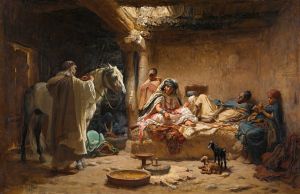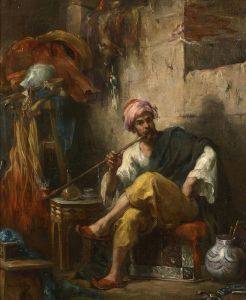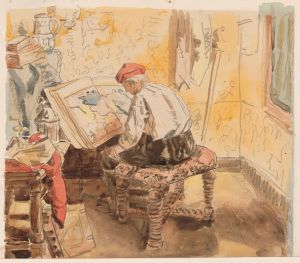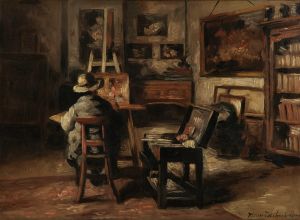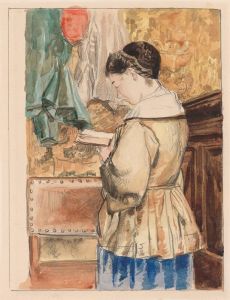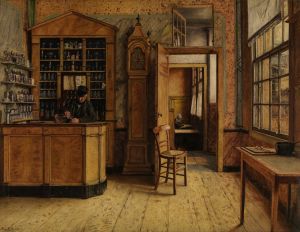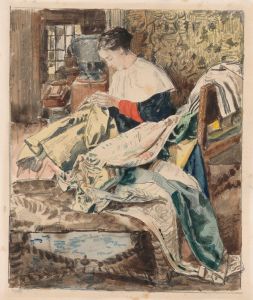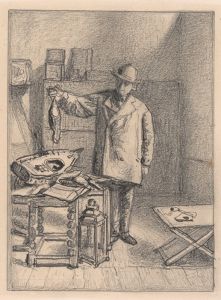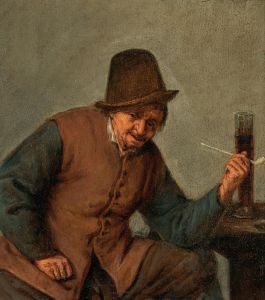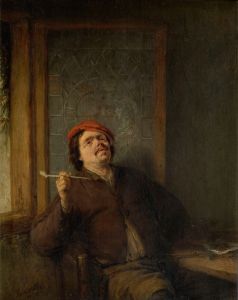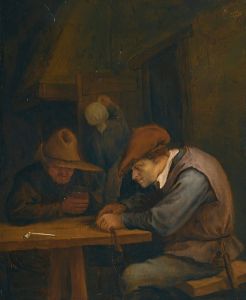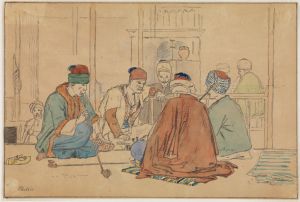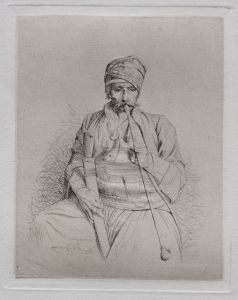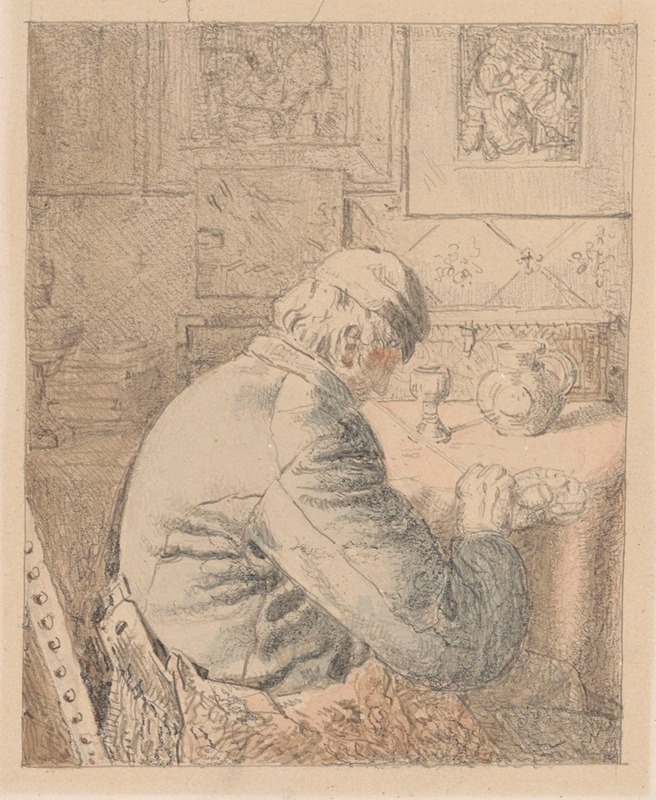
The Smoker
A hand-painted replica of Henri de Braekeleer’s masterpiece The Smoker, meticulously crafted by professional artists to capture the true essence of the original. Each piece is created with museum-quality canvas and rare mineral pigments, carefully painted by experienced artists with delicate brushstrokes and rich, layered colors to perfectly recreate the texture of the original artwork. Unlike machine-printed reproductions, this hand-painted version brings the painting to life, infused with the artist’s emotions and skill in every stroke. Whether for personal collection or home decoration, it instantly elevates the artistic atmosphere of any space.
Henri de Braekeleer was a notable Belgian painter of the 19th century, recognized for his detailed and atmospheric genre scenes. One of his works, "The Smoker," exemplifies his skill in capturing the quiet, contemplative moments of everyday life. Painted in 1868, this artwork reflects de Braekeleer's interest in the interplay of light and shadow, as well as his ability to convey the mood and character of his subjects.
"The Smoker" depicts a solitary man seated in a modest interior, engrossed in the act of smoking a pipe. The setting is typical of de Braekeleer's work, featuring a simple, yet meticulously detailed room that suggests a sense of intimacy and introspection. The man's attire and the furnishings around him are rendered with careful attention to detail, highlighting the artist's commitment to realism.
De Braekeleer was part of a family of artists; his uncle, Henri Leys, was a significant influence on his work. Leys was known for his historical scenes, and while de Braekeleer did not follow directly in his uncle's thematic footsteps, he adopted a similar dedication to detail and atmosphere. "The Smoker" is a testament to this influence, as it combines a realistic portrayal of a domestic scene with a subtle narrative quality.
The painting is characterized by its subdued color palette, which enhances the contemplative mood. De Braekeleer often employed earth tones and soft lighting to create a sense of warmth and tranquility. In "The Smoker," the light source is not immediately visible, but it softly illuminates the man's face and the surrounding objects, casting gentle shadows that add depth to the composition.
De Braekeleer's technique involved building up layers of paint to achieve a rich texture and depth, a method that is evident in "The Smoker." The textures of the man's clothing, the wooden furniture, and the walls are rendered with precision, inviting viewers to appreciate the tactile qualities of the scene. This attention to materiality is a hallmark of de Braekeleer's style and contributes to the lifelike quality of his paintings.
"The Smoker" also reflects de Braekeleer's interest in capturing the psychological state of his subjects. The man's expression is one of quiet contemplation, suggesting a moment of pause and reflection. This focus on the inner life of his characters is a recurring theme in de Braekeleer's work, setting him apart from other genre painters of his time.
Throughout his career, de Braekeleer faced personal and professional challenges, including periods of mental illness that affected his productivity. Despite these difficulties, he remained committed to his artistic vision, and his works continue to be appreciated for their technical skill and emotional depth.
Today, "The Smoker" is held in high regard as an example of de Braekeleer's mastery of genre painting. It is housed in the Royal Museum of Fine Arts in Antwerp, where it is part of a collection that celebrates the rich artistic heritage of Belgium. The painting remains a testament to de Braekeleer's ability to find beauty and meaning in the everyday moments of life, capturing them with a sensitivity and precision that continues to resonate with audiences.





